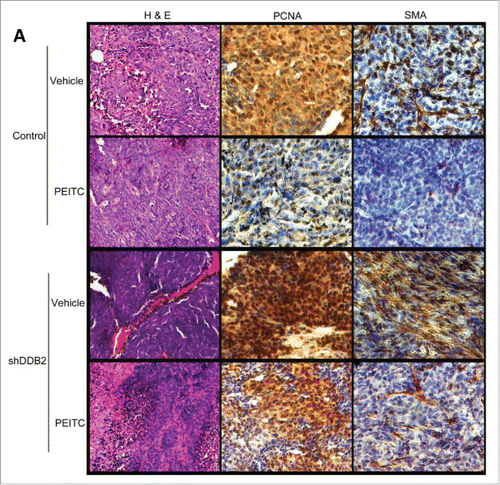Article Title: Tumor regression by phenethyl isothiocyanate involves DDB2
Authors(s): Nilotpal Roy, Indira Elangovan, Dragana Kopanja, Srilata Bagchi and Pradip Raychaudhuri
Journal: Cancer Biology & Therapy
Bibliometrics: Published in Volume 14, pp. 108–116
DOI: 10.4161/cbt.22631
Publisher: Taylor & Francis
The authors inadvertently supplied an older version of found on p. 113 of the article indicated above. A correct version of appears below. The change does not affect any conclusions of the study. The authors apologize for the error.
Figure 5. DDB2 deficiency abrogates PE ITC-mediated regression in tumor aggressiveness. HCT116 cells expressing control shRNA or DDB2 shRNA were injected subcutaneously into nude mice. Mice were divided randomly in two groups for each cell line for treatment with PE ITC or vehicle control. Four weeks post treatment mice were sacrificed and tumor sections were fixed in 10% Formalin, processed and embedded with paraffin for sectioning. Prepared tumor section slides were then subjected to immunohistochemical analysis using H&E, PCNA or SMA antibody (A). Representative images (20 × magnification) are shown.

